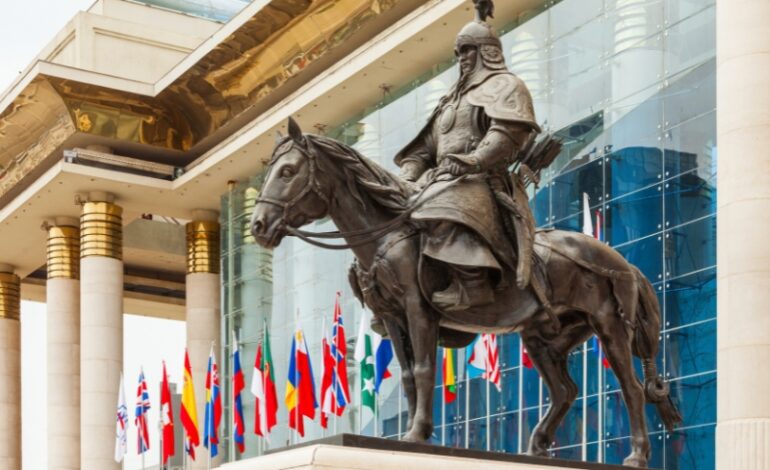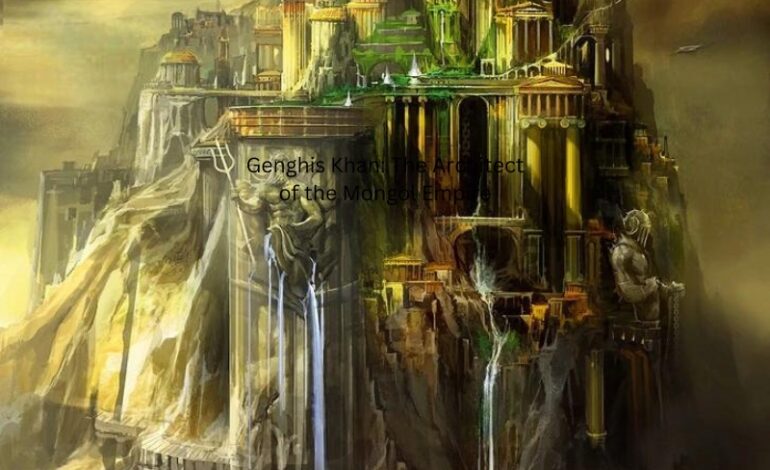Genghis Khan: The Architect of the Mongol Empire

Introduction to Genghis Khan

In the annals of history, few names command as much respect and fear as Genghis Khan. Born into the harsh steppes of Mongolia, he rose from obscurity to forge one of the largest empires the world has ever seen. His life story is a testament to the indomitable human spirit and the transformative power of visionary leadership.
Early Life and Struggle for Power

Temüjin, who would later be known as Genghis Khan, was born in 1162 near the Onon River in Mongolia. His early years were marred by violence and betrayal, which shaped his character and his approach to leadership. After his father was poisoned by rival Tatars, his family was cast out of their tribe, left to survive in the harsh wilderness. These formative years instilled in Temüjin a resilience and a determination to overcome adversity1.
The young Temüjin quickly distinguished himself with his charismatic leadership and strategic acumen. He began to forge alliances and defeat rival tribes, displaying a unique ability to unite the Mongolian nomads under a single banner. By 1206, he had vanquished his enemies and unified the Mongol tribes, assuming the title of Genghis Khan, which means “universal ruler” or “emperor of all emperors.”
Conquests and Expansion
The empire Genghis Khan’s military campaigns are legendary for their scale and ferocity. He led his armies across Asia, conquering vast territories and defeating formidable foes. His empire eventually stretched from the Pacific Ocean in the east to the gates of Europe in the west, and from the Siberian tundra in the north to the Indian subcontinent in the south.
The Mongol army, renowned for its discipline and innovative tactics, was the key to Genghis Khan’s success. The Mongols were master horsemen and archers, capable of executing complex maneuvers with precision and speed. They utilized psychological warfare, espionage, and a merit-based command structure that rewarded skill and loyalty over aristocratic birth.
Genghis Khan’s conquests were not merely military endeavors; they were also driven by a desire for trade and cultural exchange. He established the Silk Road as a protected trade route, which allowed for the flow of goods, ideas, and technology between the East and the West. This period of relative peace and stability, known as the Pax Mongolica, facilitated unprecedented cultural interactions and economic growth.
Governance and Legacy

Genghis Khan was not only a conqueror but also a shrewd ruler who implemented progressive policies within his empire. He promoted religious tolerance, abolished aristocratic privileges, and established a universal writing system. His legal code, the Yassa, laid the foundation for governance and justice in the Mongol Empire.
The death of Genghis Khan in 1227 did not halt the expansion of the Mongol Empire. His successors continued to conquer new lands, and at its zenith, the empire covered over 24 million square kilometers. The Mongol Empire profoundly influenced the political and cultural landscape of Eurasia, shaping the course of history for centuries to come.
Conclusion
Genghis Khan’s impact on the world was monumental. He was a complex figure, often vilified for the brutality of his campaigns, yet also admired for his achievements in state-building and governance. His legacy is a mosaic of conquest, innovation, and cultural fusion that continues to captivate the imagination of people around the globe.
Genghis Khan’s story is a reminder of the transformative power of visionary leadership and the enduring influence of historical figures. His life and empire serve as a testament to the fact that even the most humble beginnings can lead to the loftiest heights. As we reflect on the legacy of Genghis Khan, we are reminded of the profound ways in which a single individual can alter the course of history.








![Top 5 Most Powerful Mysterious Creatures Of All Time[Updated 2024]](https://newsdailybeats.com/wp-content/uploads/2024/06/mystery-creatures-1.jpg)
